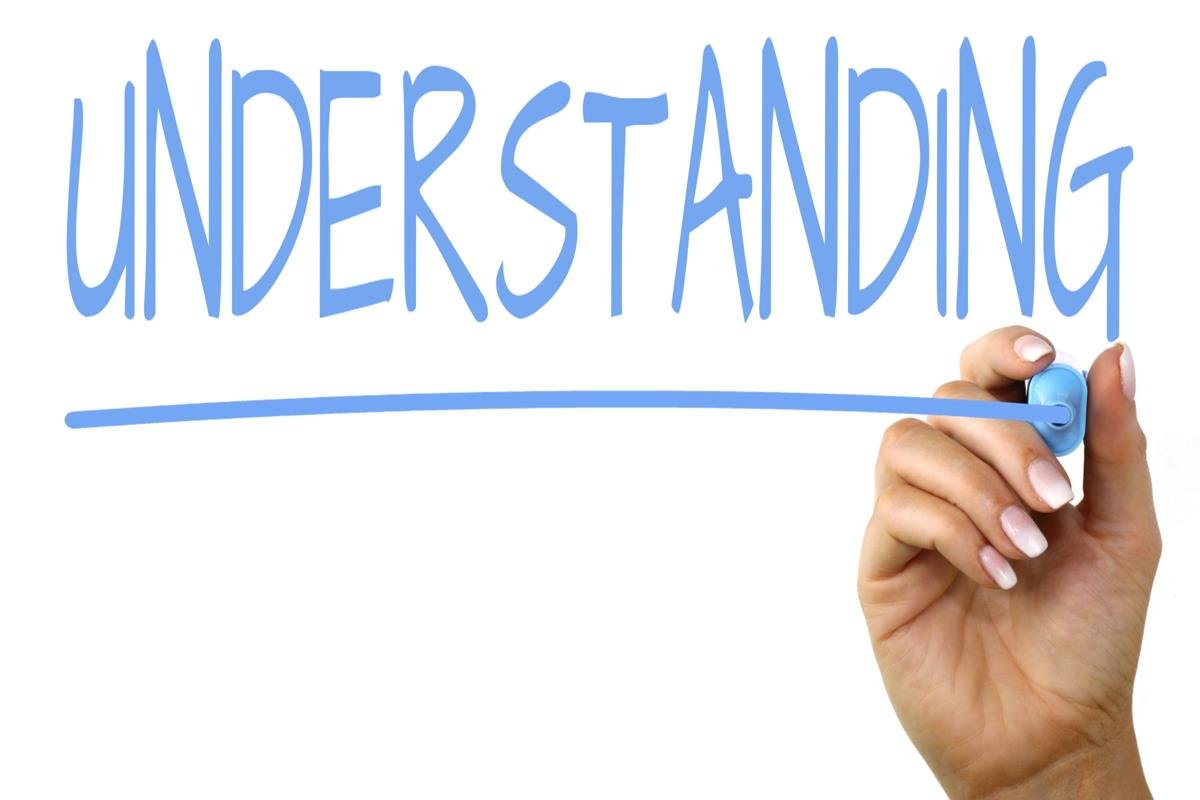In a world where diverse opinions collide, conflicts seem to lurk at every corner, threatening to disrupt relationships, hinder progress, and leave a trail of bitterness in their wake. But what if conflicts didn’t have to be perceived as destructive forces, but rather as opportunities for growth and understanding? Welcome, dear readers, to a journey through the art of conflict resolution—a subject that has been tiptoed around and misunderstood for centuries, yet possesses the power to transform how we navigate disagreements. In this article, we will embark on a quest to unravel the mysteries of constructive conflict resolution strategies, equipping you with the tools to forge harmony amidst divergent perspectives. In a realm where compromise meets communication, and understanding paves the way for resolution, prepare to unleash the power within you to not just overcome conflicts, but to emerge from them stronger, wiser, and more united than ever before.
Effective Communication: The Key to Resolving Conflicts Peacefully
When conflict arises, it is natural for tensions to run high and emotions to cloud rational thinking. So how do we navigate through these stormy waters of disagreement and reach calm shores of resolution? The answer lies within one powerful tool that has the potential to dismantle even the most entrenched conflicts – effective communication.
Effective communication is the lifeblood of any harmonious relationship or peaceful negotiation. By actively listening and empathizing with the concerns of others involved in the conflict, you create an atmosphere of understanding and openness. This allows everyone to feel heard and respected, setting the stage for a mutually satisfactory resolution.
One crucial element of effective communication is clarity. Clearly expressing your own thoughts, needs, and desires without ambiguity or aggression can prevent misunderstandings and defensiveness. Likewise, actively clarifying the statements and intentions of others ensures that everyone is on the same page, avoiding unnecessary conflict and misinterpretation.
- When communicating, use “I” statements to express your perspective without assigning blame.
- Practice active listening by paraphrasing and summarizing what the other person has said.
- Avoid distractions, such as technology or multitasking, to demonstrate your respect and full attention.
- Build rapport by using nonverbal cues like maintaining eye contact and nodding to show engagement.
Ultimately, effective communication is the key to building bridges, understanding diverse viewpoints, and creating resolutions that satisfy all parties involved. By fostering a safe and respectful space for dialogue, conflicts can be transformed into opportunities for growth and improved relationships.

Understanding the Root Causes: Uncovering the underlying issues in disagreements
Disagreements are a natural part of human interaction, but they often stem from deeper issues that may not be immediately apparent. To truly understand and resolve conflicts, it is crucial to uncover the root causes that fuel them. Let’s explore some common underlying issues that contribute to disagreements:
1. Miscommunication: One of the most common causes of disagreements is miscommunication. When individuals fail to express themselves clearly or misunderstand each other’s intentions, it creates a breeding ground for conflict. Miscommunication can occur due to differences in cultural background, language barriers, or simply a lack of effective communication skills.
2. Differing perspectives: Each person possesses a unique lens through which they view the world. Differing perspectives can arise from diverse experiences, beliefs, values, or personal biases. These differences can lead to misunderstandings and clashes when two individuals fail to acknowledge and respect each other’s viewpoints. Recognizing and appreciating diverse perspectives is essential for bridging the gaps in understanding.
3. Unresolved emotions: Emotions, whether conscious or suppressed, often play a significant role in disagreements. Unresolved anger, resentment, or fear can distort individuals’ perceptions and fuel conflicts. It is crucial to acknowledge and address these emotions to prevent them from further complicating the resolution process. Encouraging open and honest dialogue can provide an avenue for individuals to express their feelings and begin the healing process.
4. Power imbalances: Disagreements can arise from power imbalances, where one party wields more influence or control than the other. These imbalances can stem from differences in social status, hierarchy, or even personal insecurities. Addressing power dynamics and working towards establishing equality and fairness can help alleviate tensions and promote a more harmonious resolution.
By delving deeper into the root causes of disagreements, we can gain a better understanding of the underlying issues that contribute to conflicts. Through open-mindedness, active listening, and a willingness to address these issues head-on, we can foster a more cooperative and empathetic approach to resolving disagreements.

Finding Common Ground: Building consensus and fostering collaboration
In today’s diverse and fast-paced world, finding common ground and building consensus is essential for effective collaboration. It is through this process that unique perspectives can converge, creating a powerful foundation for innovation and progress. Here are some key strategies that can help foster collaboration and build consensus:
- Active Listening: One of the fundamental aspects of building consensus is to actively listen to all parties involved. By genuinely understanding different viewpoints, we can empathize, appreciate diversity, and identify commonalities.
- Encouraging Dialogue: Fostering an open and inclusive environment is vital. Encourage individuals to express their thoughts and opinions freely, creating a space where respectful dialogue can flourish. This allows for the exploration of ideas and promotes synergy among team members.
- Identifying Shared Goals: Discovering and highlighting shared goals is crucial in order to bridge gaps and establish a common foundation. When everyone focuses on a common objective, it becomes easier to navigate through differences and find ways to work together effectively.
- Seeking Compromises: Collaboration often requires finding compromises that satisfy multiple perspectives. By understanding individual priorities and being willing to adapt, teams can find innovative solutions that incorporate a variety of ideas. Compromises help prevent a win-lose mentality and promote cooperation.
Remember, building consensus and fostering collaboration is an ongoing process that requires patience and commitment from all parties involved. By actively seeking out common ground and embracing diversity, teams can create an environment where ideas flourish, and true collaboration can thrive.

Managing Emotions: Techniques for keeping emotions in check during conflicts
Conflicts are a natural part of our lives, but managing our emotions during these challenging times is essential for maintaining healthy relationships. Here are some effective techniques that can help you keep your emotions in check when faced with conflicts:
- Breathe deeply: When tensions rise, take a moment to focus on your breath. Inhale deeply and exhale slowly, allowing your body to relax. This simple technique can help you regain control over your emotions and approach the conflict with a clear mind.
- Practice active listening: Instead of reacting impulsively, make an effort to listen attentively to the other person’s perspective. This demonstrates respect and opens up the possibility for a productive conversation without escalating emotions.
- Reflect before responding: Before blurting out a response in the heat of the moment, take a pause and reflect on what was said. Give yourself time to process the information and choose your words wisely. This ensures your response is thoughtful and less likely to be influenced by heightened emotions.
- Foster empathy: Put yourself in the other person’s shoes. Try to understand their emotions and motivations. Empathy allows you to approach conflicts with greater understanding and can help defuse tense situations.
Remember, conflicts are opportunities for growth and understanding. By practicing these techniques, you can maintain your emotional composure and contribute to resolving conflicts in a constructive manner.

Negotiation and Compromise: Strategies for finding win-win solutions
When it comes to negotiations, finding a win-win solution is often the ultimate goal. It involves finding a middle ground where both parties feel satisfied and their interests are met. Here are some strategies that can help you navigate the negotiation process and achieve mutually beneficial outcomes:
- Active listening: One of the most important skills in negotiation is listening actively. Pay attention to what the other party is saying and try to understand their perspective. This will allow you to identify common interests and areas where compromise is possible. Remember, effective communication is key to building trust and finding common ground.
- Identify shared goals: Look for goals that are in alignment with both parties’ interests. This could be achieving cost savings, improving efficiency, or enhancing customer satisfaction. By identifying these shared goals, you can focus on finding solutions that fulfill both parties’ needs, increasing the likelihood of a win-win outcome.
- Brainstorm creative solutions: Instead of adhering to rigid positions, encourage innovative thinking. Consider alternatives that may not have been initially apparent. Brainstorming allows for out-of-the-box ideas and increases the chances of finding a compromise that meets everyone’s needs. Be open to exploring unconventional solutions that can maximize mutual benefits.
- Establish clear communication: Effective communication is crucial during negotiations, ensuring that both parties understand each other’s perspectives and needs. Clearly express your interests, concerns, and priorities, while also acknowledging and respecting the other party’s viewpoint. Use respectful language and avoid personal attacks. A productive dialogue can foster collaboration and create an environment conducive to finding win-win solutions.
Remember, negotiations are a give-and-take process. It requires empathy, flexibility, and a willingness to compromise. By employing these strategies, you can increase your chances of finding win-win solutions that satisfy both parties’ objectives and promote positive long-term relationships.
In Summary
As we near the end of this intriguing journey into the realms of conflict resolution, one thing becomes abundantly clear. The art of handling disagreements with grace and thoughtfulness is not reserved for the faint-hearted; rather, it is a skill that we can all cultivate and master. We have explored an array of strategies and tactics, each presenting its own unique approach to resolving conflicts constructively.
From the ever-reliable technique of active listening, where empathetic ears lead the way to mutual understanding, to the power of perspective-taking, where we step into the shoes of our adversaries and see the world through their eyes, we have witnessed the transformative potential of these strategies. The ancient wisdom of negotiation and compromise, coupled with the revolutionary concept of win-win solutions, has empowered us with the tools to dismantle barriers and build bridges.
Yet, it is essential to remember that conflict resolution is not a one-size-fits-all formula. Each situation demands a tailored approach, rooted in open-mindedness and a sincere willingness to seek common ground. We must be mindful of our own emotions, recognizing that sometimes stepping back and taking a breather is the most effective path towards resolution. Patience and persistence are our allies, as we navigate the often treacherous waters of disagreement.
In our quest for harmony, let us not forget the vital role of communication, dripping with authenticity and respect. Words hold immense power — they can either escalate conflicts or pave the way for healing. By choosing to engage in constructive dialogue, we can unearth shared values and aspirations, allowing us to move from adversaries to allies.
In conclusion, conflict resolution is a testament to our humanity, a reflection of our capacity for growth and understanding. It is an ongoing journey that requires courage, vulnerability, and a steadfast commitment to fostering harmony. As we bid farewell to these pages, let us remember that the true measure of our character lies not in our ability to avoid conflicts, but in our ability to resolve them with grace and dignity.




